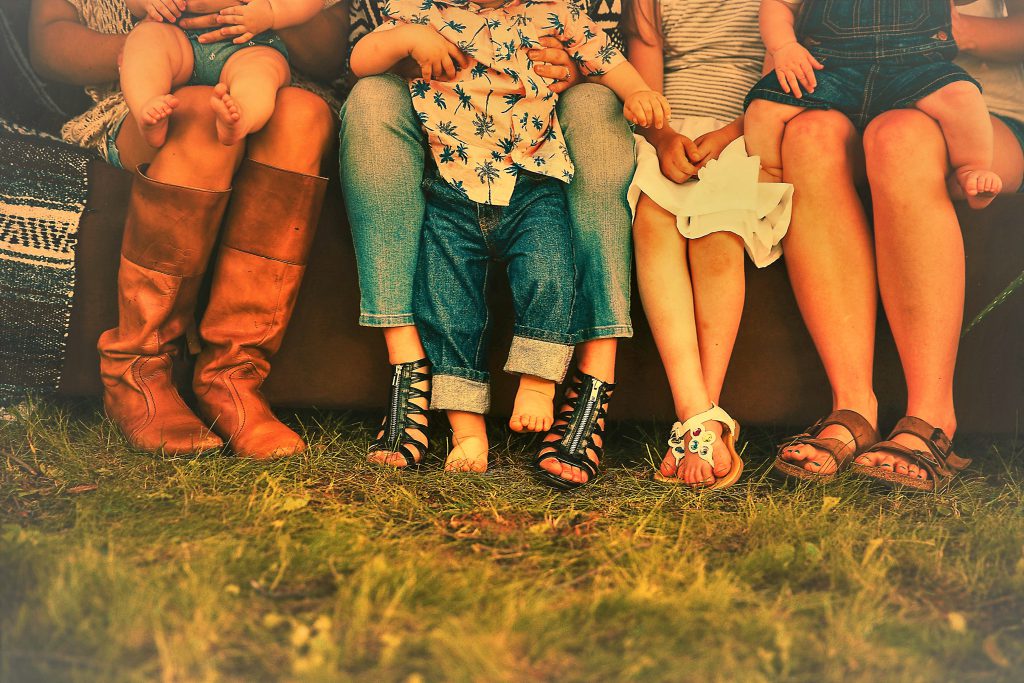Education for Sustainable Development (SDGs) in kindergarten? It’s all a question of attitude!
 “Roots creep underground everywhere and make a firm foundation. Shoots seem very weak, but to reach the light, they can break open brick walls. Imagine that the brick walls are all the problems we have inflicted on our planet. Hundreds of thousands of roots & shoots, hundreds of thousands of young people around the world, can break through these walls. We can change the world” (Jane Godall)
“Roots creep underground everywhere and make a firm foundation. Shoots seem very weak, but to reach the light, they can break open brick walls. Imagine that the brick walls are all the problems we have inflicted on our planet. Hundreds of thousands of roots & shoots, hundreds of thousands of young people around the world, can break through these walls. We can change the world” (Jane Godall)
Last year in November I attended the 2017 Agenda Congress on Education for Sustainable Development (ESD) and I was very impressed to see so many committed people from so many different fields gathered in one place for sustainability. During these two days, however, I am once again reminded of how little attention is paid to early childhood education in relation to education for sustainable development.
It makes me sad. Especially the first three years of the children’s development lay the basis for their whole life.
When I regularly ask myself as an early childhood educator how I can bring children closer to sustainability, especially in the first three years, one answer always catches my eye: through values and attitude!
How do children adopt values and attitudes?
The first three years of a child’s life are more formative and significant than almost any other. From birth, children are curious and cosmopolitan little creatures who want to help shape their lives. In order to maintain these qualities, it is immensely important to understand that children can develop their full potential above all through loving relationships, characterized by strong and solid bonds. Brain researcher Gerald Hüther and paediatrician Herbert Renz-Polster describe it in a wonderfully metaphorical way: “Like trees, children need strong, deep, branched roots. Not all parents or teachers know this. For them, numerous branches, colourful leaves and ripe fruits are of greater importance.
“The roots[…] are strong emotional relationships with the people they grow up with. If they can’t develop these bonds, their branches, leaves and fruits will only remain versions of what could have become of them.” ( Renz-Polster & Hüther, 2013)
That’s the problem, we don’t need perfectly functioning, socially adapted children who don’t question anything, do their work and define themselves through consumption.
We need children who have grown not only from their roots but also with wings with which they can fly across the boundaries and limitations of the community. (Renz-Polster & Hüther, 2013)
What role does the attitude of educators play in the kindergarten?
Many children attend a kindergarten or similar educational institution in the first years of their lives, which makes it an important part of their first years of life. This makes the role and, especially, the attitude of educators more important. Over the last few years, I have noticed colleagues and fellow students shrugging together anxiously on the subject of education for sustainable development. What else are we supposed to do? How are we supposed to do that?
For many years, however, sustainability has been found in many different areas. I say: The wheel does not have to be reinvented! There is already a lot of potential that can be taken up thematically! A small example: Figures etc. are made of papier mache from old newspaper – a so called upcycling! It is accompanied thematically by the educators: Where does paper come from? What is made of paper? How is it recycled? etc.
As you can see, the wheel is not being reinvented. But more decisive than the small suggestions on the subject of sustainability, which there are too many of, is to reflect on one’s own attitude to this subject: How do I live my life, do I live a sustainable life and if so, in which areas of my life? Is sustainability important to me at all, can I convey the topic authentically?
An honest reflection of his own attitude and lifestyle plays an important role. To make this easier, one of my favorite methods – the “ecological footprint” developed by William E. Rees and Mathis Wackernagel. This method creates a kind of sustainable balance of one’s own lifestyle, i.e. it shows as a result the number of planets one would need if everyone in the world would live as oneself. This makes some people reflect and question their lifestyles and perhaps start to change.
Once the educators have sniffed” sustainable air”, it often makes it possible to reflect one’s own attitude on many levels of sustainability. And as clumsy as it may sound, I firmly believe that once the stone has started to roll, it will be unstoppable. It is precisely at this moment that this attitude, which may have changed, will be decisive for the pedagogical work.
How could pedagogical work with children concerning sustainability look like?
Children are actors in their own world, they want to participate, discover, research and understand. They learn the rules of togetherness and values of contact. The development of a child with its values and competences in early childhood is more rapid than in any other stage of life.
A perfect starting point to sensitize children and their environment for education for sustainable development and a sustainable way of life.
“From an early age, children have a sense of justice[…]. It makes sense and is important to make children aware of sustainability issues.” Prof. Dr. Gertrud Nummer-Winkler (cf. Haus der kleinen Forscher Foundation, 2018, p.29)
Our task is to accompany children carefully and with dignity and to support them in the development of shaping competence. ” Shaping competence is the ability to apply knowledge about sustainable development and to recognize problems of unsustainable development.” (Transfer21)
In addition to its basic values and abilities, the child recognizes that its actions have an impact on other living beings and its environment. This gives the child an awareness that lays the foundation for education for sustainable development. Children develop values especially when they are taken seriously in their views and are allowed to experience that they can make a difference. The world does not need ready-made answers, it needs children who have the courage to try out new things. Already in the earliest years children can recognize connections between cause and effect, so they can already estimate future consequences. (Haus der kleinen Forscher,2018)
Wonderful suggestions for practical work in kindergartens or similar institutions to address sustainability issues and to give children opportunities for interaction include:
- Experimenting
- Research and discover
- Philosophizing with children
- Natural gardening
- Unstructured and unobserved game
- Project work
In the philosophizing with children, children and their points of view are heard, perceived and taken seriously, the children are strengthened in which they are allowed to take a stand.
In the exchange with the children also the view of the educators changes and to come back again to Gerald Hüther and Herbert Renz-Polster: the interconnection patterns in our brain are restructured up to old age. The basis for changing attitudes and positions is the activation of the emotional areas in the brain. That only happens if you feel with them. Little children can still do this! We have to keep it for them. Hüther and Renz-Polster belief that children in today’s world learn to suppress their compassion. (Renz-Polster & Hüther, 2013, p.109f)
But this compassion is exactly what we need for a rethink, and this creates a sense of responsibility. If things are close to our hearts, if we value and respect them, then we want to protect them and take care of them!
We as educators are in demand, we are the examples, we must adopt an honest, sustainable pedagogical attitude so that issues of sustainability find their way into kindergartens and similar institutions. We. Together. With the children.
Tip: Talking about practice – “Embedding sustainable practices”
